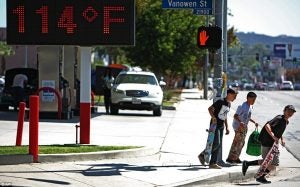 Everyone has a role to play in fighting climate change. Farmers can use new methods to rotate their crops that keep more carbon safely in the ground. Consumers can act with their wallets – buying goods and services that produce less carbon than competitors. Our elected officials, of course, have a lot of influence in setting the narrative and enabling support for climate progress.
Everyone has a role to play in fighting climate change. Farmers can use new methods to rotate their crops that keep more carbon safely in the ground. Consumers can act with their wallets – buying goods and services that produce less carbon than competitors. Our elected officials, of course, have a lot of influence in setting the narrative and enabling support for climate progress.
But around the country, in municipal buildings, state offices, and corporate headquarters, separate groups of people are busy designing and implementing changes that could have the biggest impact of all: a better, smarter, more modern grid.
Improving our electricity system could be the single largest climate fighting opportunity we have. But it’s not as simple as just putting solar panels on rooftops. Our grid was built over a century ago by different companies, cities, and co-ops. Pieces of it are owned and run by a dizzying web of stakeholders. Even if we could snap our fingers and spur all of these pieces to action, each player would manifest different versions of a “modern grid.”
Environmental Defense Fund (EDF) thus released a guide titled, “Grid Modernization: The foundation for climate change progress” [PDF], which outlines the six key categories that make up a sustainable grid modernization strategy. All of them are connected, either physically or digitally, or by legislation, regulation, or management. Most importantly, they’re connected by efficiency: If each of them is executed well, the whole grid modernization process will yield the best, most reliable, most affordable, and cleanest electricity system. Read More »
 The latest UN IPCC report makes it crystal clear that carbon dioxide (CO2) is not the only pollutant that matters for limiting future warming.
The latest UN IPCC report makes it crystal clear that carbon dioxide (CO2) is not the only pollutant that matters for limiting future warming.
 This May, ExxonMobil, the world’s largest publicly traded oil and gas company,
This May, ExxonMobil, the world’s largest publicly traded oil and gas company, 

